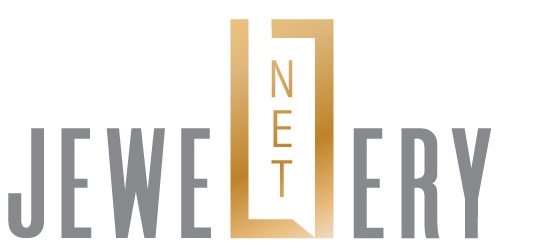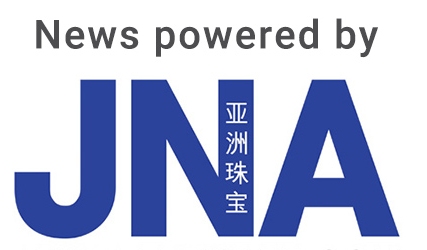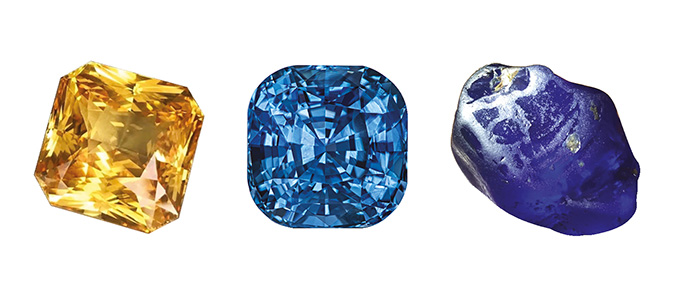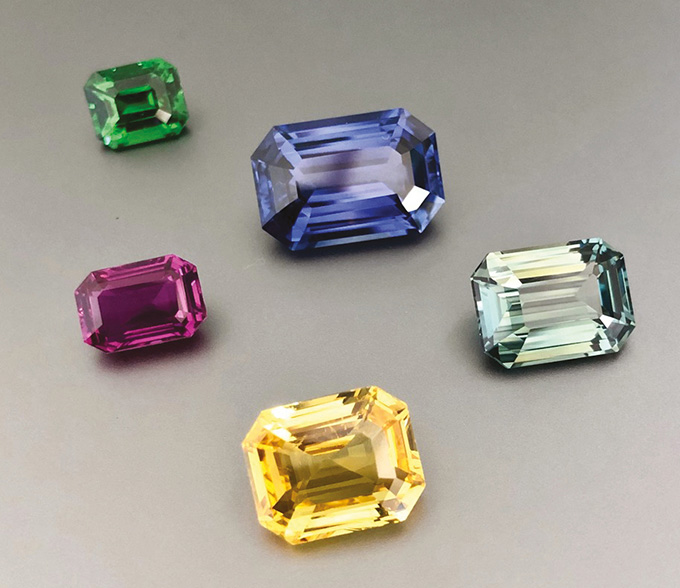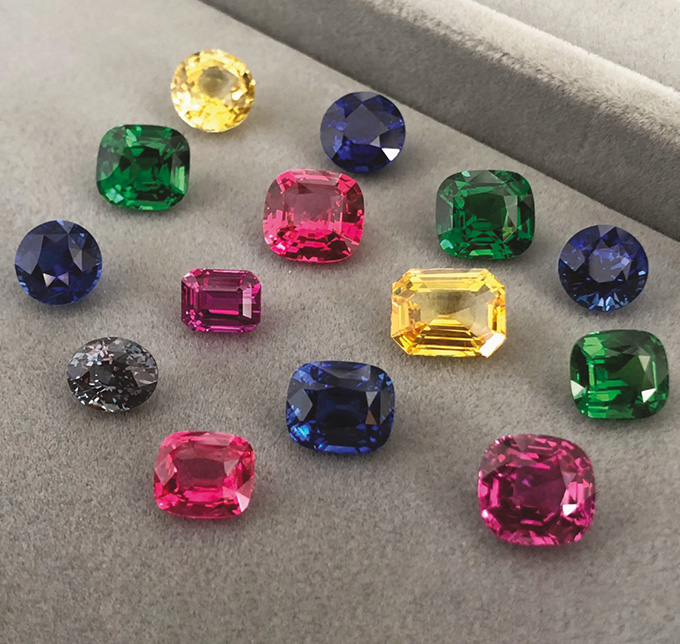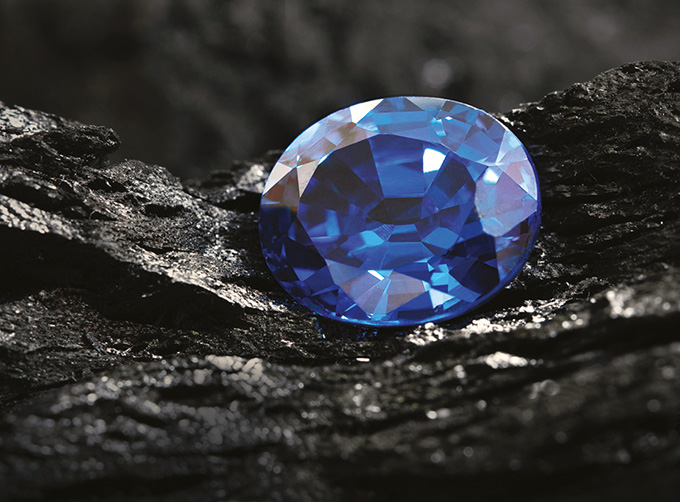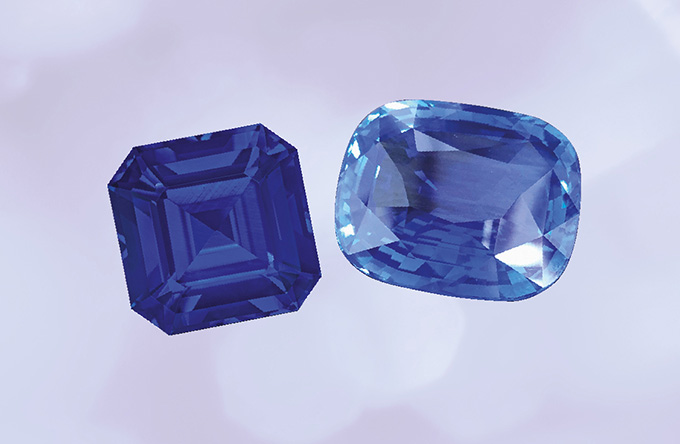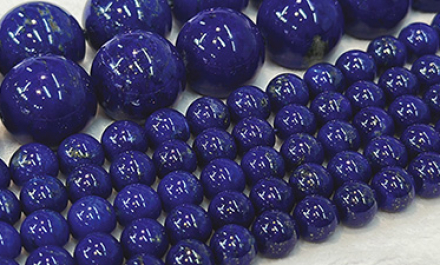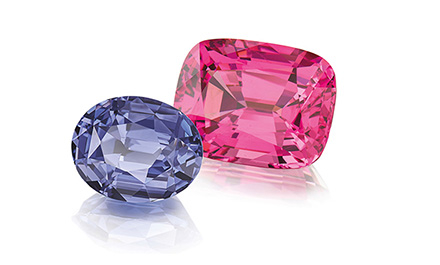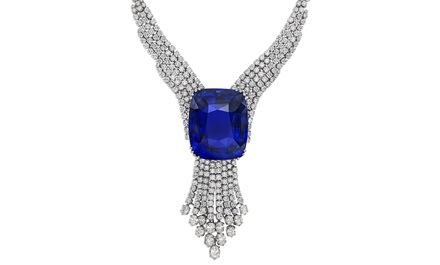Blue sapphires continue to command a strong presence in the global gemstone trade, thanks to their inherently regal appeal, versatility and value.
This article first appeared in the GEMSWORLD 2025.
Brilliant blue sapphires are among the most coveted coloured gemstones in the world. While they come in a stunning range of colours – from sunset yellows to lavenders and rose pinks – the most celebrated shade worldwide is the classic celestial blue.
Sapphires are primarily mined in Sri Lanka (Ceylon), Myanmar (Burma), Australia, Montana in the US as well as Tanzania, Madagascar, Kenya, Mozambique and Ethiopia in Africa.
Market overview
Despite overall volatility in global gemstone and jewellery markets due to economic and geopolitical uncertainties, the current outlook for blue sapphires appears steady. According to Dave Bindra, vice president of US-based B&B Fine Gems, demand remains strong for fine unheated sapphires although price resistance is finally setting in after two years of unprecedented growth.
There is also limited supply of high-quality rough and polished sapphires across all colour categories. Major sapphire buyers are the US, Europe, Thailand, Sri Lanka and China. While country of origin is a factor, most sapphires currently in circulation come from either Sri Lanka or Madagascar, with subtle differences in value between the two sources.
“The biggest challenge is finding the top 5 per cent of the market that everyone is after,” revealed Bindra. “Supplies are at an all-time low and, with many new buyers entering the sapphire space from the volatile diamond market, competition at the source has reached unprecedented levels.”
Amid difficulties in the diamond industry, coloured gems are becoming an attractive alternative. Navneet Agarwal, marketing manager of Navneet Gems and Minerals Ltd in Thailand, said the entry of diamond buyers into the coloured gemstone market is affecting profit margins.
He explained, “Supply has become problematic as a result. Fewer goods and increased and consistent demand from buyers are driving prices higher, with some customers unwilling to accept annual price hikes.”
According to Safraz Jabir of Sri Lankan gemstone dealer Safaiyers, mining in Sri Lanka continues to face mounting difficulties, resulting in sourcing hiccups and lower sapphire production. He noted, "You cannot find enough goods, so when markets decelerate, production slows down as well. This balance is actually beneficial. When supply increases, demand and prices tend to drop. Currently, there is a correlation between market activity and mining output.”
Following presidential elections in Sri Lanka in September 2024, the trade has been significantly impacted by high inflation and rising living costs. Jabir explained that more people are visiting Sri Lanka to source gemstones, further contributing to its reputation as a gem trading hub. Coming across finer pieces, however, has become increasingly challenging.
Competition at the mines is also fierce. “There are stones coming out of the mines but everyone is after the best materials, so supply is limited. This makes it difficult to secure top-quality stones. Only a handful of fine pieces are available despite a high volume of buyers,” continued Jabir. As a result, pricing has become complex and quality stones are becoming scarcer.
Australian sapphires
Australian sapphires are also being viewed as viable options for sapphire dealers. According to Agarwal of Navneet Gems, mining conditions in other places around the world are “unknown” while in Australia, there is transparency, which is important to buyers.
Navneet Gems sources Australian sapphires from miner Fura Gems, which prides itself in providing responsibly and ethically sourced gems.
Agarwal said prices have consistently risen with each Fura Gems auction, adding that dealers are adapting to new realities as profit margins tighten due to ongoing labour shortages and higher operating costs.
Australian blue sapphires are traditionally known as a more affordable alternative. Recognised for their unique teal and darker blue tones, they offer greater flexibility in pricing and availability, particularly to buyers seeking a distinct shade of blue.
“Australian blue sapphires are selling well due to their high clarity while those from Sri Lanka and Madagascar remain consistent but limited and are often out of reach of budget-conscious buyers,” remarked Agarwal. Price-sensitive customers today are on the lookout for gemstones that offer both good value and affordability, he added.
As notions of individuality and freedom of expression become more pronounced, unique colours are gaining traction. An example is parti-colour Australian sapphire, which features two colours in one stone. According to Agarwal, Japanese buyers are particularly interested in calibrated parti-colour sapphires.
“Japan is a mature market, so there is a need to launch gems that highlight origin and treatment, and to offer something different,” he said.
Expensive blues
As sourcing finer materials becomes more difficult, clients are beginning to understand that they must pay a premium to acquire such gems. Jabir of Safaiyers stated that fine-quality materials, such as a 10-carat Royal Blue sapphire for instance, move the fastest.
According to Jonathan Zabihi, owner of US gemstone dealer Brilliant Colours, finer, rarer gems have a steady following while demand for commercial goods is declining. “Our suppliers are already offering discounts of 10 per cent to 20 per cent on heated stones. In contrast, prices for unheated stones remain strong,” he explained.
As a result, Zabihi said he will focus on one-of-a-kind gems moving forward until prices stabilise.
He also noted an increase in the number of heated sapphires in the market while buyers seem to have become more accepting of these stones. This is largely because rare, unheated gems are nearly impossible to acquire due to skyrocketing prices. Despite sourcing difficulties, demand for rare items remains strong, he added.
Meanwhile, prices vary significantly based on colour, clarity, quality and production scale – factors that play a crucial role in determining the gemstone’s value.
For Australian sapphires of 1 carat, prices can range from about US$125 to US$350 per carat at wholesale, Agarwal of Navneet Gems said.
Fine unheated sapphires in smaller sizes, particularly those under 5 carats, are in high demand, added Zabihi. “Prices of unheated stones are more manageable,” he added. Sapphires of 10 carats and above, however, frequently carry six-figure prices or above, making it difficult to find suitable end-products for consumers.
Wholesale prices for top-quality sapphires under 5 carats are priced below US$10,000 per carat, continued Zabihi. “If it is a truly exceptional Ceylon or a rare Kashmir stone, that is a different story; we might consider paying more,” he noted. “But for high-grade Ceylon or Madagascar sapphires, we aim to stay under US$10,000 a carat, allowing us to sell at a slight premium.”
Popular shapes and cuts
The choice of cuts varies depending on specific customer needs and preferences. Traditionally, oval mixed cut and cushion cut across all colours are extremely favoured. Jabir remarked, “Many designers opt for drop shapes to create necklaces and other jewellery pieces. Diamond companies and brands are also using coloured stones more and more instead of diamonds, which is a positive trend for us."
For Agarwal, more traditional elongated shapes, baguettes, marquises, ovals and classic round cuts are all-time favourites and are readily available. Suppliers have ample stock of these stones, hence they are on the lookout for shapes that are harder to come by, he added.
Agarwal is also experimenting with hexagon shapes. “The biggest challenge with hexagon shapes is the production process as these require highly skilled labour to calibrate each piece accurately, ensuring consistency in sizes and angles,” he noted.
Optimism for the future
Traders remain positive about the sapphire market, buoyed by the overall strength of the coloured gemstone industry. “Colour is becoming increasingly popular, and retailers are actively promoting it. In my opinion, colour is one of the most promising niches in the jewellery world right now,” noted Zabihi.
For his part, Agarwal said even major stores in the US, which rarely featured coloured stones 10 years ago, are now showcasing a variety of coloured gem collections.
“Currently, buyers are testing the waters, evaluating samples and making initial purchases, with some investing substantial amounts in coloured gemstones. While majority of them are conservative, their cautious approach is already benefiting the coloured gemstone market,” stated Agarwal.
Sapphire note
Bonas Group and Potentate Mining LLC, North America’s largest sapphire producer from Montana, hosted an inaugural Montana sapphire tender in Bangkok from December 2 to 4, 2024. This collection of Rock Creek sapphires featured a wide range of colours, including unique fancies like vivid to pastel pink, yellow and orange, as well as classic blues and the distinctive teal tones characteristic of the region.
